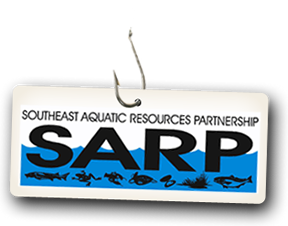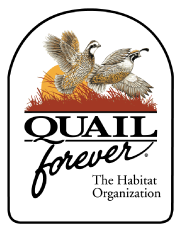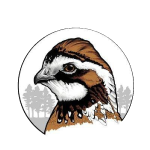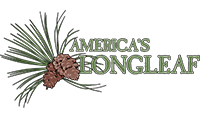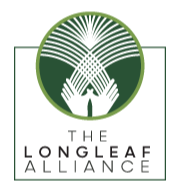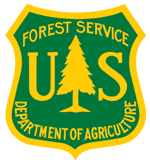Projects RSS
by
Web Editor
—
last modified
Jul 03, 2013 03:21 PM
- Thorn Creek Aquatic Passage Project, Pendelton County, West Virginia — by Admin — last modified Sep 04, 2014 07:03 PM
- This project will remove the 9 identified fish passage barriers in a 50 square mile wild brook trout watershed in Thorn Creek of the South Branch of the Potomac. (Photo: Typical low water bridge crossing to be removed on Thorn Creek in West Virginia.)
- Brook Trout Restoration and Expansion in Garth Run, Virginia — by Admin — last modified Sep 04, 2014 07:03 PM
- This project will restore and improve stream and riparian habitat within a 2,357 foot project area located in the headwaters of Garth Run which was severely impacted by catastrophic flooding that occurred in 1995. (Photo: Photo 1 of Garth Run, Virginia)
- Upper Shavers Fork Aquatic Passage Project, West Virginia — by Admin — last modified Sep 04, 2014 07:03 PM
- This project seeks to restore habitat linkages between two spawning tributaries and the mainstem of Upper Shaver's Fork between Cheat Bridge and Spruce, West Virginia. (Photo: The Beaver Creek Culverts to be replaced.)
- Brook Trout Restoration in the Chattahoochee National Forest, Georgia — by Admin — last modified Sep 04, 2014 07:03 PM
- This project will restore fragmented poor quality habitat and brook trout populations on the Chattahoochee National Forest in Georgia by removing and replacing a culvert on Bryant Creek that is perched and acts as a barrier to fish movement. (Photo: The culvert to be replaced on Bryant Creek in the Chattachoochee National Forest.)
- Oats Run, Upper Shavers Fork, Aquatic Passage Project in Pocahontas County, WV — by Admin — last modified Sep 04, 2014 07:03 PM
- This project will restore habitat linkages between a brook trout spawning tributary in Oats Run and the mainstem of the Upper Shaver's Fork at Spruce West Virginia. (Photo: The fish passage barrier to be replaced on Oats Run in the Upper Shavers Fork in West Virginia.)
- Dirt & Gravel Road, Streambank Stabilization Project on Cross Fork, Pennsylvania — by Admin — last modified Sep 04, 2014 07:03 PM
- This project will select and implement high priority projects that focus on dirt and gravel road improvements, streambank stabilization, riparian buffer restoration, and brook trout habitat expansion. (Photo: Improper drainage from dirt and gravel roads on Cross Fork, PA.)
- Dam Removals to Reconnect Brook Trout Habitat on an Unnamed Tributary to Frankstown Branch, PA — by Admin — last modified Sep 04, 2014 07:03 PM
- This project will remove two fish passage barriers to provide 1.33 miles of unrestricted fish passage to high-quality coldwater spawning and rearing habitat. (Photo: Lower Dam, Frankstown Branch, PA)
- St. Mary's Liming, St. Mary's River, Virginia — by Admin — last modified Sep 04, 2014 07:03 PM
- The streams of the Saint Mary's Wilderness, located on the slopes of Virginia's Blue Ridge Mountains, have been severely compromised by anthropogenic atmospheric acid deposition. This project will add limestone sand using to the headwater streams of St. Mary's River to enhance over 12 miles of stream for brook trout. (Photo: St. Mary's River, Virginia.)
- Agenda: Connecticut River Pilot Core Team Meeting, 08-28-2014 — by mmallek — last modified Sep 03, 2014 05:23 PM
- Agenda, Handouts and Presentation for August 28th Core Team Meeting in Hadley, Massachusetts from 10:00 a.m. to 2:00 p.m.
- Document: Notes from 08-28-2014 Core Team Meeting — by mmallek — last modified Sep 03, 2014 05:20 PM
- Summary, notes, and discussion from the August 28 Core Team Meeting in Hadley, MA.
- Document: Process and Decisions for Design on the Connecticut River Pilot Project — by mmallek — last modified Aug 28, 2014 09:54 AM
- This document includes the key decisions made through August 2014 on the Connecticut River Pilot Landscape Conservation Design Project. Where available, details such as the meeting at which we reached consensus, options considered, and associated documents are included.
- Presentation: Core Area Prioritization and Network Design — by mmallek — last modified Aug 28, 2014 08:43 AM
- UMass presentation on Core Area Prioritization and Network Design
- Interior Highland Shortleaf Pine Initiative — by Web Editor — last modified Aug 27, 2014 01:38 PM
- The Interior Highlands region of Arkansas, Missouri, and Oklahoma once supported vast expanses of shortleaf pine-bluestem woodlands, as well as mixed stands of pine-oak and oak-pine which were maintained by frequent fires. Over the past century 53% of these open pine stands have been significantly altered due to forest structural changes caused by eliminating fire from the ecosystem and conversion to other agricultural uses. This caused a significant decline in several priority bird species including the Brown-headed Nuthatch, Bachman’s Sparrow, Northern Bobwhite, Prairie Warbler, Whip-poor-will and federally endangered Red-Cockaded Woodpecker which all rely on open pine forest stands with a diverse grass and forb understory.
- Restoring Coal-Mined Lands to Create Habitat for Imperiled Birds — by Matthew Cimitile — last modified Aug 27, 2014 01:38 PM
- AMJV and the Appalachian Regional Reforestation Initiative are partnering up to re-establish habitat on previously mined land to create greater breeding grounds for declining bird species in the Appalachian Region. Using ARRI’s Forestry Reclamation Approach, this collaboration is replanting trees on disturbed sites in heavily populated bird areas to restore the function and form of habitats that existed prior to mining.
- Assessment and Restoration of Southern Appalachian Brook Trout — by Matthew Cimitile — last modified Aug 27, 2014 01:37 PM
- This project will complete an assessment of brook trout in-stream habitat, water quality, and fish distribution information in all Jocassee Gorges streams during the first two years of the project.
- Brook Trout Restoration and Expansion — by Matthew Cimitile — last modified Aug 22, 2014 10:19 AM
- This project will restore and improve stream and riparian habitat within a 2,357 foot project area located in the headwaters of Garth Run which was severely impacted by catastrophic flooding that occurred in 1995.
- Forestlands Best Management Practices for Golden-winged Warblers — by Matthew Cimitile — last modified Aug 22, 2014 10:14 AM
- Combing through habitat literature and conducting two years of surveys for the presence of Golden-winged Warblers at forest stands, the AMJV and partners developed best management practices for providing breeding habitat for Golden-winged Warblers through timber harvesting.
- Presentation: Building the Combined Core Area Selection Index and Delineating Core Areas — by mmallek — last modified Aug 06, 2014 03:33 PM
- Designing Sustainable Landscapes in the Northeast: A project of the NALCC and the Northeast Climate Science Center. Landscape Conservation Design, June 2014
- Presentation: Updates on Ecological Integrity and Selecting Tiered Core Areas Based on Species — by Andrew Milliken — last modified Aug 06, 2014 03:26 PM
- DSL Presentation for 5-30-14 Core Team Meeting by Kevin McGarigal, UMass with updates on ecological integrity and description of landscape capability
- Presentation: Design Criteria, Components, and Proof of Concept: A more detailed introduction to the steps in designing the conservation network — by amaclachlan — last modified Aug 06, 2014 03:21 PM
- Presentation by Kevin McGarigal (UMass) for the Designing Sustainable Landscapes Pilot project. Presentation focuses on Eco-systems and weightings options. Given on 25 April 2014.





